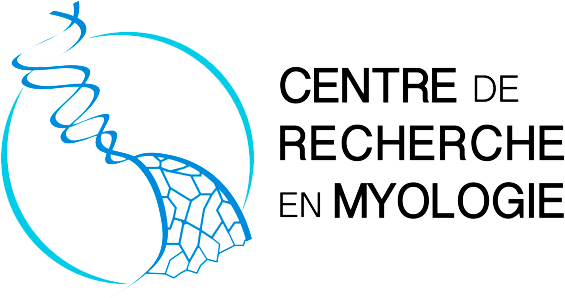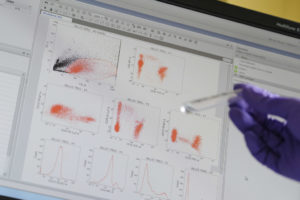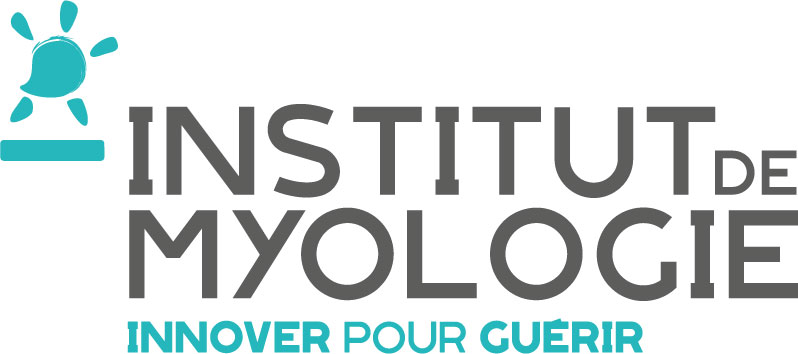Muscle cell organization and therapy of dominant centronuclear myopathy
Muscle cell organization and therapy of dominant centronuclear myopathy
Strengthening knowledge on fundamental aspects of muscle biology is one central challenge in order to decipher pathomechanisms and identify targets for therapeutic intervention for neuromuscular disorders. This is particularly true for diseases due to mutations in genes encoding proteins with pleiotropic roles such as autosomal dominant centronuclear myopathy (CNM) due to mutation of the ubiquitously expressed Dynamin 2 (DMN2) involved in endocytosis, intracellular membrane trafficking and cytoskeleton regulation. In this context, the objectives of the team are: i) to dissect fundamental mechanisms of muscle cells, relevant to understand the dominant CNM, and beyond, numerous other neuromuscular disorders, and ii) to develop experimental therapies for the dominant CNM and study the adeno-associated virus (AAV) vectors fate in pathological muscles to optimize AAV-mediated therapies for neuromuscular disorders. With these objectives, we are developing several projects:
– Role of the endocytosis machinery in mechanobiology at the costameres in healthy and pathological muscles with a particular focus on its adhesive properties and the interplay with mechanosensitive pathways. We also want to better understand how alternative splicing events of the endocytosis machinery cooperates, upon differentiation, to govern clathrin structural diversity (Stéphane Vassilopoulos).
– Role of mechanical stress in muscle homeostasis and growth under physiological and pathological conditions, with a particular focus on the force-mediated regulation of plasma membrane and nuclear stiffness and deformations, chromatin and histone modifications, and genetic programs in muscle cells. We also want to determine how muscle differentiation impacts nuclear characteristics (Catherine Coirault).
– The cellular and molecular mechanisms involved in ventilation-induced diaphragm dysfunction in particular during aging, and the muscle dysfunction occurring in patients in intensive care unit (Catherine Coirault and Adrien Bouglé).
– By combining genetic modifications, live imaging, biophysics, cellular and animal models, we aim at deciphering the pivotal influence of the nucleo-cytoskeleton connection on cell phenotype and genome organization in particular in the context of muscle formation and cardiomyopathy (Bruno Cadot).
– Preclinical development of the allele-specific silencing therapy for the dominant CNM and other DNM2-linked diseases and first proof of concept of allele-specific therapy for other dominant diseases. In addition, we want to develop pharmacological therapy for the DNM2-linked CNM patients (Delphine Trochet & Marc Bitoun).
– In order to optimize AAV-based therapies, we want to identify cellular factors impacting the efficiency of AAV-mediated transduction in diseased muscles. We are focusing on mechanisms regulating the AAV intracellular trafficking and to improve AAV-mediated therapies in DMD and CNM animal models by pharmacological co-treatments (Sofia Benkhelifa-Ziyyat).
Team members:
- Marc Bitoun. Research Director INSERM, co-team leader
- Stéphane Vassilopoulos. Research Director INSERM, co-team leader
- Catherine Coirault. Research Director INSERM
- Delphine Trochet. Research scientist Association Institut de Myologie
- Sofia Benkhelifa-Ziyyat. Research scientist Association Institut de Myologie
- Bruno Cadot. Research scientist Association Institut de Myologie
- Bernard Prudhon. Research Assistant Association Institut de Myologie
- Lylia Mekzine. Research associate INSERM
- Marion Benoist. PhD Student Sorbonne University. Email:
- Kevin Milliet. Master student.
- Ines Akrouf. PhD Student Sorbonne University. Email :
- Joana Martins. PhD Student Sorbonne University. Email :
- Satish Moparthi. Post doc. Email :
- Marine Dumas. Research Assistant AIM. Email :
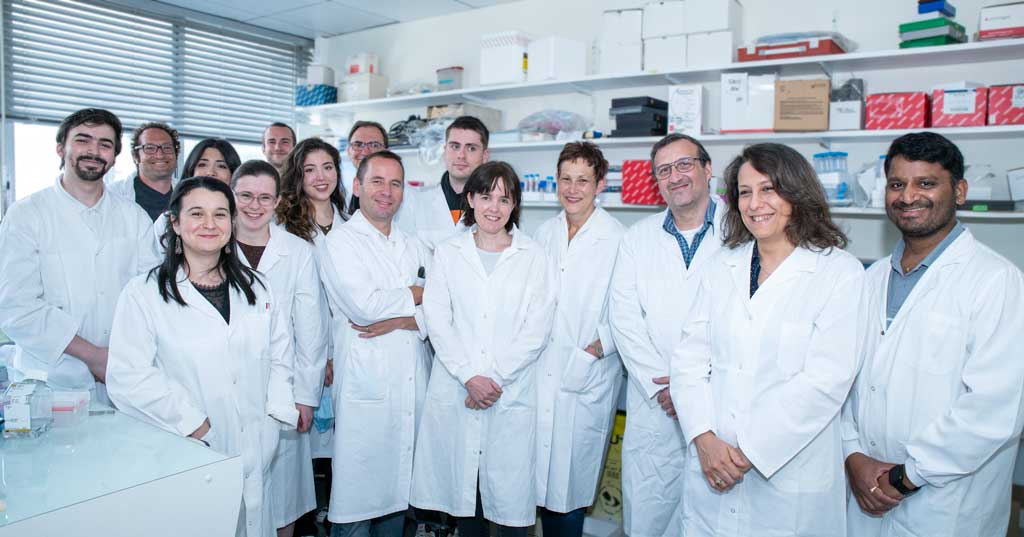
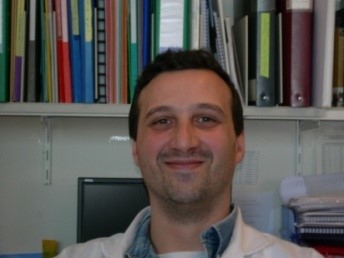
Contact:
| Name | Position | ORCID |
|---|
- Gilles Moulay, Jeanne Lainé, Mégane Lemaître, Masayuki Nakamori, Ichizo Nishino, et al.. Alternative splicing of clathrin heavy chain contributes to the switch from coated pits to plaques. Journal of Cell Biology, 2020, 219 (9), ⟨10.1083/jcb.201912061⟩. ⟨hal-03005118⟩
- Théophile Déjardin, Pietro Salvatore Carollo, François Sipieter, Patricia M Davidson, Cynthia Seiler, et al.. Nesprins are mechanotransducers that discriminate epithelial–mesenchymal transition programs. Journal of Cell Biology, 2020, 219, ⟨10.1083/jcb.201908036⟩. ⟨hal-02989257⟩
- Stéphane Vassilopoulos. Unconventional roles for membrane traffic proteins in response to muscle membrane stress. Current Opinion in Cell Biology, 2020, 65, pp.42-49. ⟨10.1016/j.ceb.2020.02.007⟩. ⟨hal-03005110⟩
- Francesca Bottanelli, Bruno Cadot, Felix Campelo, Scott Curran, Patricia M Davidson, et al.. Science during lockdown – from virtual seminars to sustainable online communities. Journal of Cell Science, 2020, 133 (15), ⟨10.1242/jcs.249607⟩. ⟨hal-03272827⟩
- Patricia M Davidson, Aude Battistella, Théophile Déjardin, Timo Betz, Julie Plastino, et al.. Nesprin‐2 accumulates at the front of the nucleus during confined cell migration. EMBO Reports, 2020, 21 (7), ⟨10.15252/embr.201949910⟩. ⟨hal-02989244⟩
- Aurélien Perrin, Corinne Metay, Marcello Villanova, Robert-Yves Carlier, Elena Pegoraro, et al.. A new congenital multicore titinopathy associated with fast myosin heavy chain deficiency. Annals of Clinical and Translational Neurology, 2020, ⟨10.1002/acn3.51031⟩. ⟨hal-02573441⟩
- Claudia Puri, Marco M Manni, Mariella Vicinanza, Christine Hilcenko, Ye Zhu, et al.. A DNM2 centronuclear myopathy mutation reveals a link between recycling endosome scission and autophagy. Developmental Cell, 2020, 53 (2), pp.154 - 168. ⟨10.1016/j.devcel.2020.03.018⟩. ⟨hal-03272818⟩
- Daniel J Owens, Martina Fischer, Saline Jabre, Sophie Moog, Kamel Mamchaoui, et al.. Lamin Mutations Cause Increased YAP Nuclear Entry in Muscle Stem Cells. Cells, 2020, 9 (4), pp.E816. ⟨10.3390/cells9040816⟩. ⟨inserm-02538651⟩
- Jean-François Darrigrand, Mariana Valente, Glenda Comai, Pauline Martinez, Maxime Petit, et al.. Dullard-mediated Smad1/5/8 inhibition controls mouse cardiac neural crest cells condensation and outflow tract septation. eLife, 2020, 9, pp.e50325. ⟨10.7554/eLife.50325⟩. ⟨hal-02533295⟩
- Piera Smeriglio, Paul Langard, Giorgia Querin, Maria Grazia Biferi. The Identification of Novel Biomarkers Is Required to Improve Adult SMA Patient Stratification, Diagnosis and Treatment. Journal of Personalized Medicine, 2020, 10 (3), pp.75. ⟨10.3390/jpm10030075⟩. ⟨hal-02986776⟩
